Lovebirds are one of the most popular pet bird species due to their affectionate nature, vibrant colors, and playful personalities.
These small parrots are known for forming strong bonds with their mates and human companions, making them a delightful addition to any home.
In this guide, we will explore everything you need to know about Lovebirds, from their origins to their care, breeding, and common challenges.
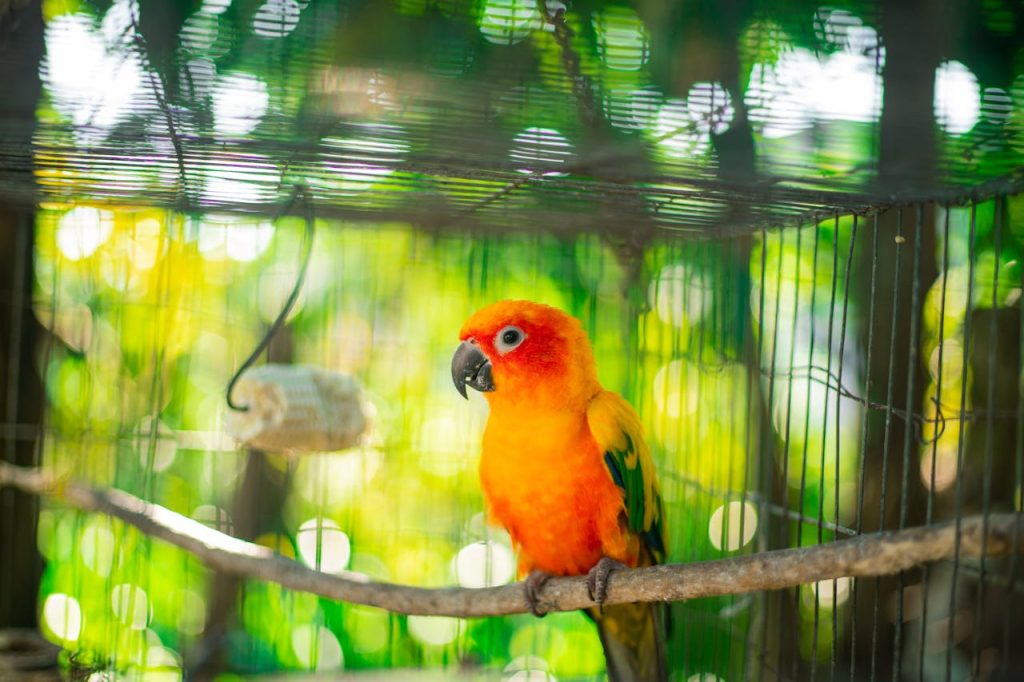
Table of Contents
Origin of Lovebirds
Lovebirds originate from Africa and Madagascar, where they are commonly found in woodlands and savannas.
They thrive in small flocks and are known for their close companionship with their partners, often seen preening and feeding each other.
Physical Traits: Color, Size, and Lifespan
Lovebirds are small yet strikingly colorful birds. Their physical characteristics include:
- Size: Lovebirds typically measure 5 to 7 inches (13 to 17 cm) in length.
- Color Variations: Depending on the species, Lovebirds come in a range of colors, including green, peach, yellow, and blue.
- Lifespan: With proper care, Lovebirds can live between 10 to 15 years, with some reaching up to 20 years in captivity.
Unique Traits of Lovebirds as Pets
- Bonding: Lovebirds form strong attachments to their mate or owner. If kept alone, they require extra attention from their human companion.
- Playful Nature: They love to climb, chew, and interact with their environment.
- Mimicry: While they are not as skilled as larger parrots, some Lovebirds can mimic sounds and simple words.
- Energetic and Social: Lovebirds need daily interaction and mental stimulation to remain happy and healthy.
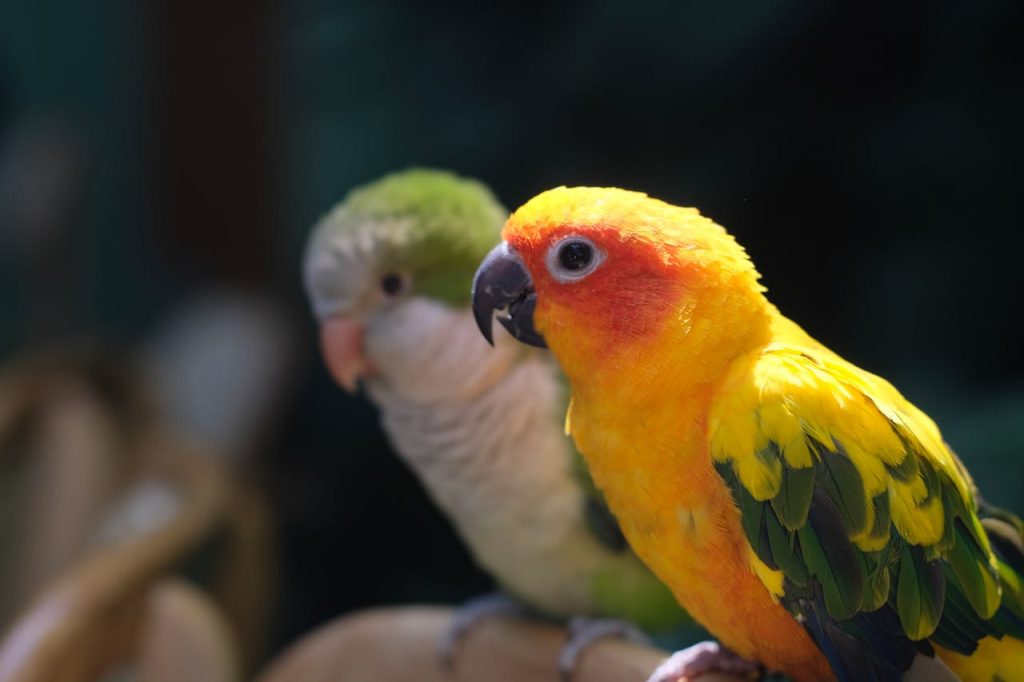
Breeding Lovebirds: Clutch Size and Raising Chicks
- Eggs per Clutch: Lovebirds lay 4 to 6 eggs per clutch.
- Incubation Period: The eggs hatch in 22 to 24 days.
- Fledging: Chicks are ready to leave the nest around 6 to 8 weeks after hatching.
- Nesting Requirements: Breeding pairs need a comfortable nesting box filled with soft materials like shredded paper or wood shavings.
Common Health Issues in Lovebirds
Like all birds, Lovebirds are susceptible to certain health problems:
- Psittacosis (Parrot Fever): A bacterial infection that affects breathing.
- Feather Plucking: Often caused by stress, boredom, or poor diet.
- Beak and Feather Disease: A viral infection affecting their immune system and plumage.
- Vitamin Deficiencies: Lack of Vitamin A can lead to respiratory and skin issues.
- Mites and Parasites: These can cause discomfort and feather loss if not treated.
Regular vet check-ups and a proper diet can help prevent these issues.
Special Care for Raising Lovebirds
To ensure your Lovebird remains happy and healthy, consider the following:
- Cage Size: A minimum of 24x24x24 inches with horizontal bars for climbing.
- Diet: A balanced diet including pellets, seeds, fresh fruits (apples, grapes, berries), and vegetables (carrots, spinach, bell peppers).
- Social Interaction: Lovebirds need daily socialization to prevent loneliness and aggression.
- Toys and Activities: Provide plenty of toys, ladders, and swings to keep them engaged.
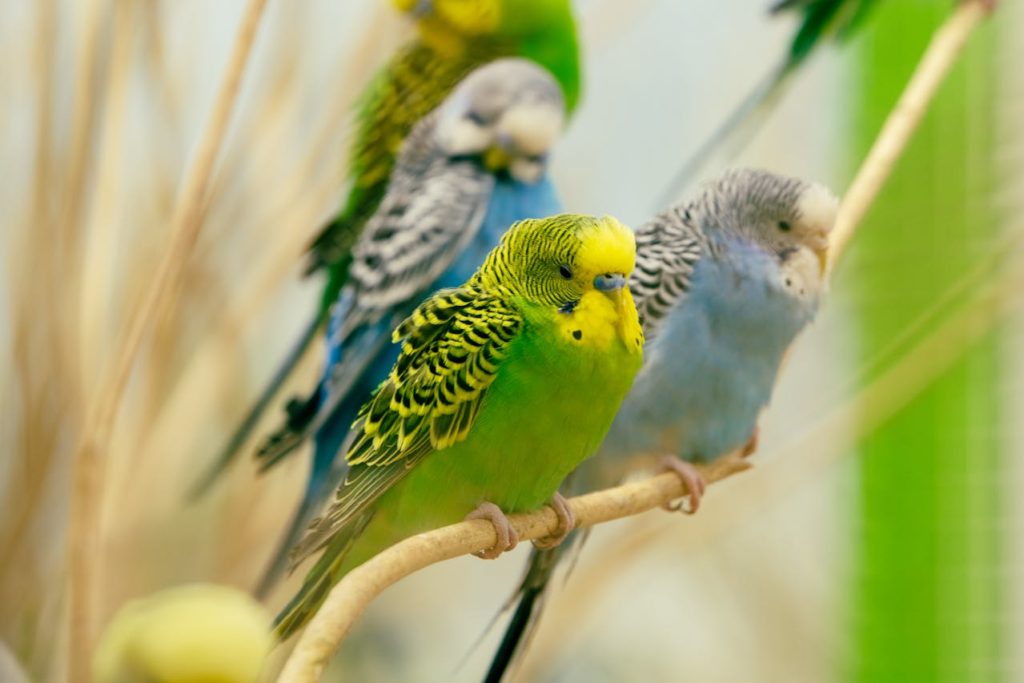
Grooming and Hygiene
Proper grooming helps keep Lovebirds in top condition:
- Beak and Nail Care: Natural wood perches help maintain their beak and nails.
- Bathing: Lovebirds enjoy bathing in shallow water dishes or misting sprays.
- Molting: Ensure they have a nutritious diet to support healthy feather regrowth during molting.
Fun Facts About Lovebirds
- Lovebirds are monogamous and form lifelong bonds with their mates.
- They communicate through chirps, whistles, and playful behavior.
- Some Lovebirds enjoy snuggling in their owner’s hair or clothing.
- Unlike larger parrots, Lovebirds do not talk much, but they mimic household sounds.
- They love to chew paper and tuck it into their tail feathers to create nesting material.
- Challenges of Owning Lovebirds
Owning Lovebirds comes with certain challenges:
- Require Social Interaction: Without proper attention, they can become aggressive or depressed.
- Noisy Chirping: Their vocalizations may be bothersome to noise-sensitive owners.
- Destructive Chewing: Lovebirds need safe toys to satisfy their chewing instincts.
- Can Be Territorial: Some Lovebirds may show aggression towards new birds if not properly socialized.
Tips for Lovebird Owners
- Consistent Routine: Keep a daily schedule for feeding, playing, and interaction.
- Training: Use positive reinforcement for commands like “step up.”
- Flight Safety: Ensure a bird-proofed environment before letting them out of the cage.
- Health Monitoring: Watch for signs of illness, such as ruffled feathers or loss of appetite.
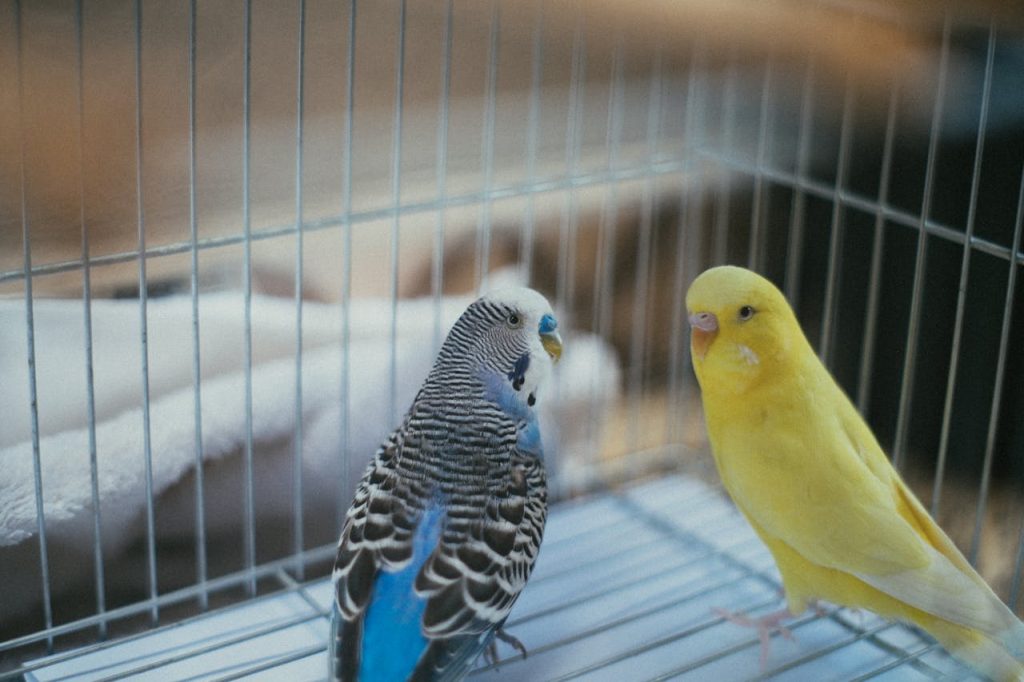
Choosing the Right Lovebird Chick
When selecting a Lovebird, consider:
- Healthy Appearance: Look for bright eyes, smooth feathers, and active behavior.
- Hand-Fed vs. Parent-Raised: Hand-fed Lovebirds are usually more comfortable with humans.
- Age: Young birds (8-12 weeks old) are easier to train and bond with.
Preparing Your Home for a Lovebird
- Place the cage in a well-lit, quiet area.
- Avoid drafts and direct sunlight.
- Remove toxic plants and small objects that could be swallowed.
Socializing Your Lovebird
- Talk to them daily in a calm voice.
- Use treats to encourage bonding and trust.
- Play interactive games and introduce new toys regularly.
- Travel and Transportation
- Use a secure, well-ventilated carrier.
- Start with short trips to get them accustomed to travel.
- Keep them comfortable with familiar food and toys.
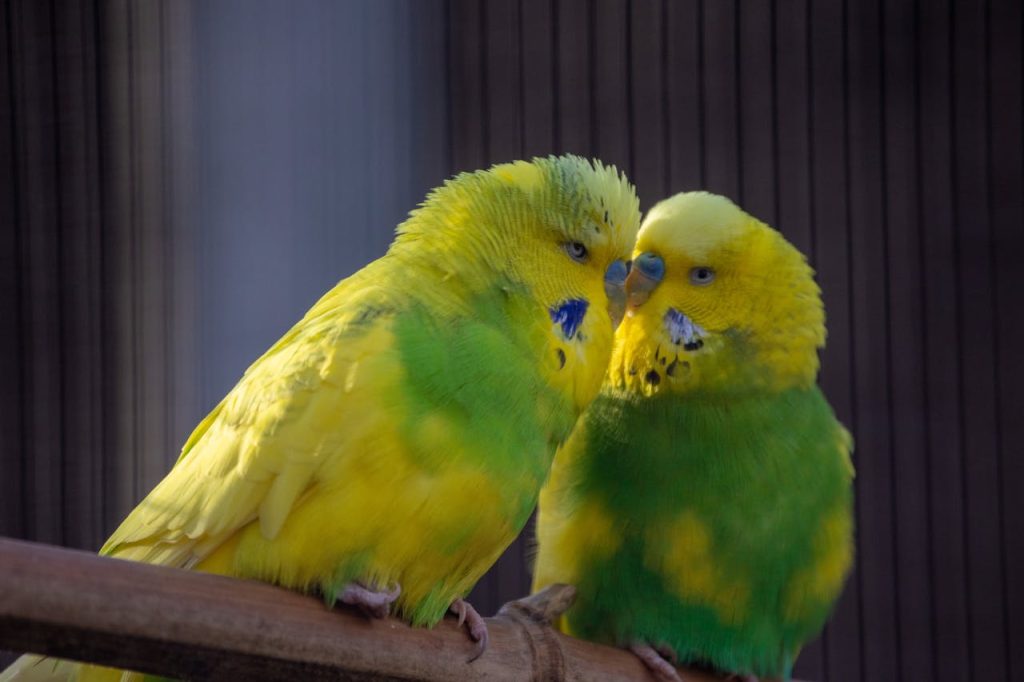
Why Birds Make the Perfect Pets
Lovebirds are affectionate, intelligent, and social creatures that can bring immense joy to their owners.
If you’re considering adding a feathered friend to your home, check out our guide: Why Birds Make the Perfect Pets?
Learn More About Bird Breeds
Lovebirds are just one of many fascinating bird breeds that make wonderful pets. If you are interested in exploring more about pet birds, check out our guides on Cockatiels for Beginners and Macaws Majestic Pet Birds to discover the unique traits, care needs, and joys of owning these amazing avian companions.
Conclusion
Lovebirds are affectionate, colorful, and playful pets that thrive with proper care and social interaction.
Whether you’re a beginner or an experienced bird owner, these small parrots can bring a lifetime of joy and companionship.
By understanding their needs, providing proper care, and giving them plenty of love, you can ensure that your Lovebird remains happy and healthy for years to come.
FAQs
Why are they called Lovebirds?
Lovebirds are named for their strong pair bonds and affectionate behavior, as they often sit closely and groom their mates.
Is a Lovebird a good pet?
Yes, Lovebirds make excellent pets due to their playful, social nature, but they require daily interaction and mental stimulation.
Can I call a couple Lovebirds?
Yes, the term “Lovebirds” is commonly used to describe a deeply affectionate couple, inspired by the birds’ close bonding habits.
What will Lovebirds eat?
Lovebirds eat a balanced diet of seeds, pellets, fresh fruits (apples, berries), and vegetables (carrots, spinach, bell peppers).


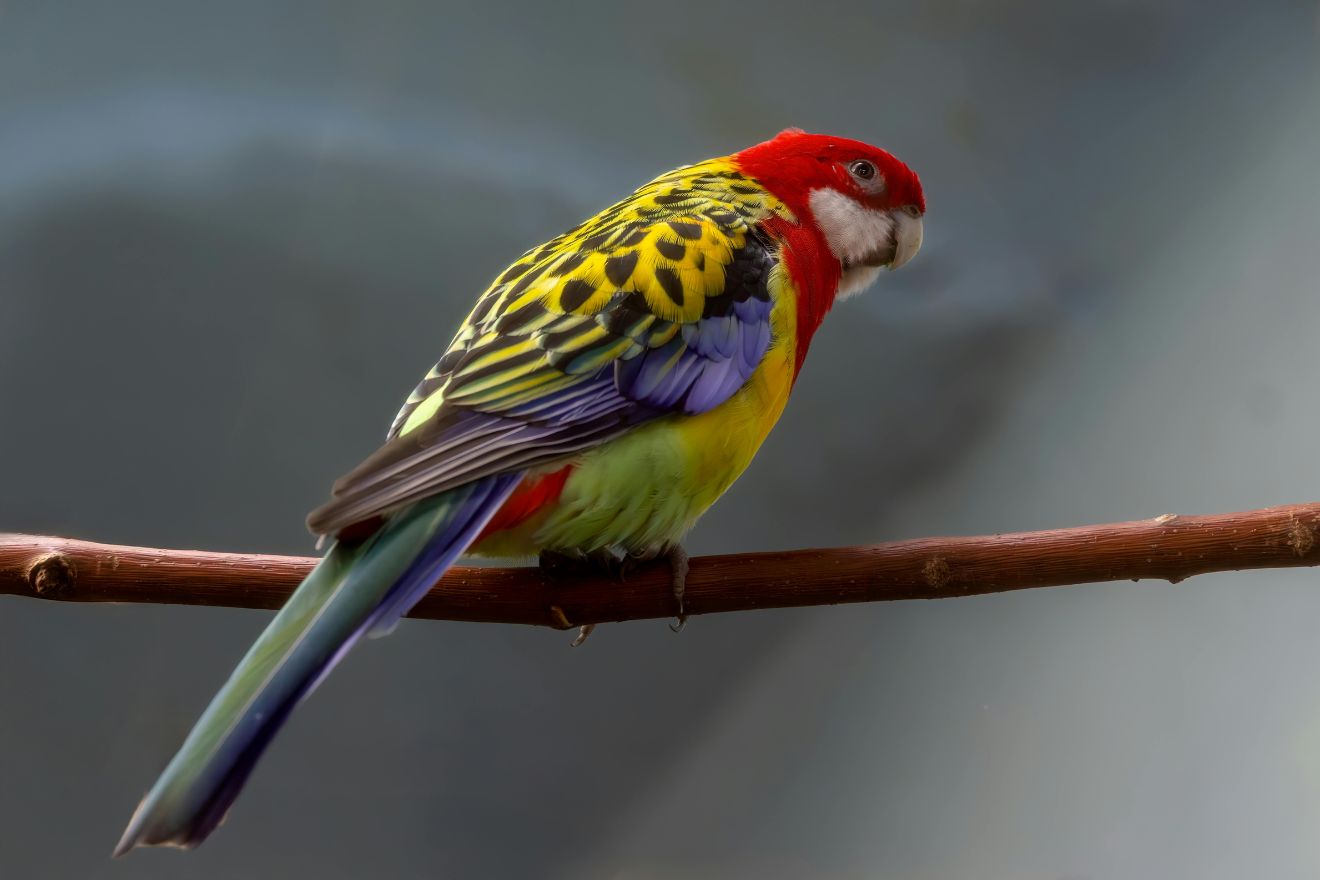
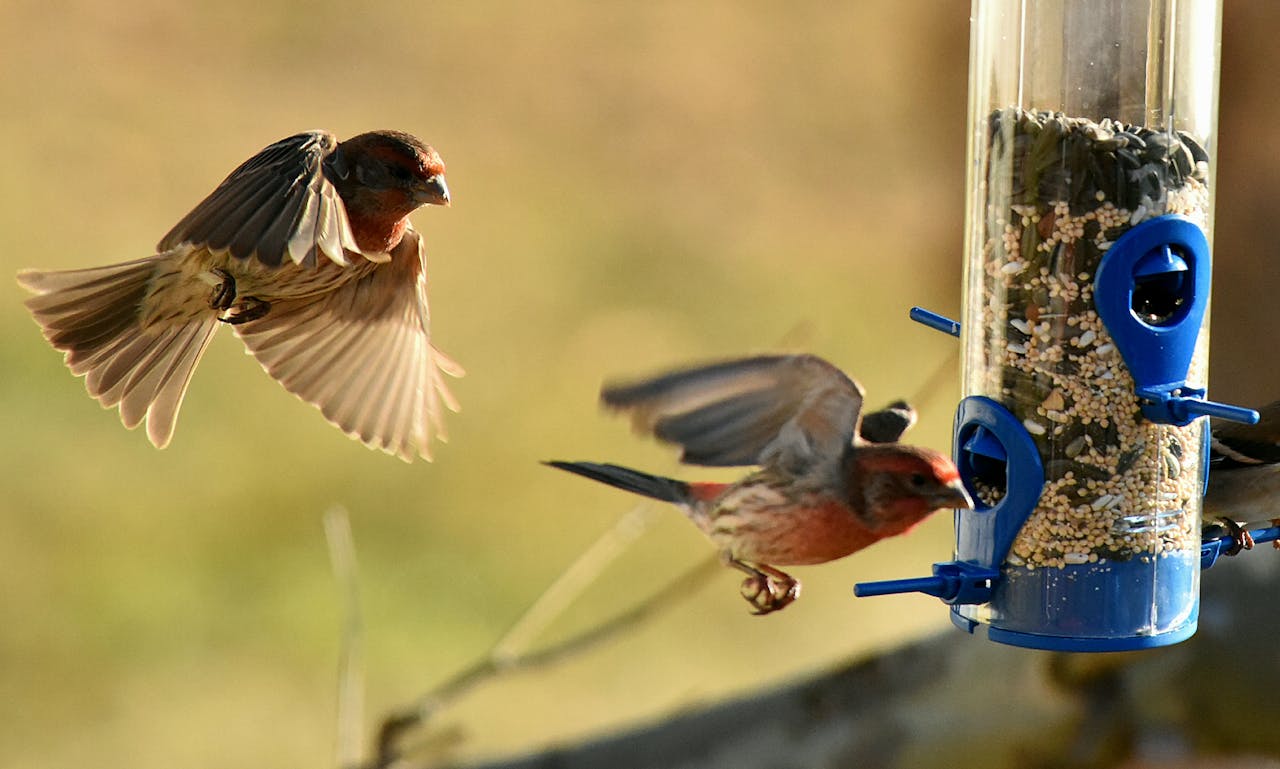
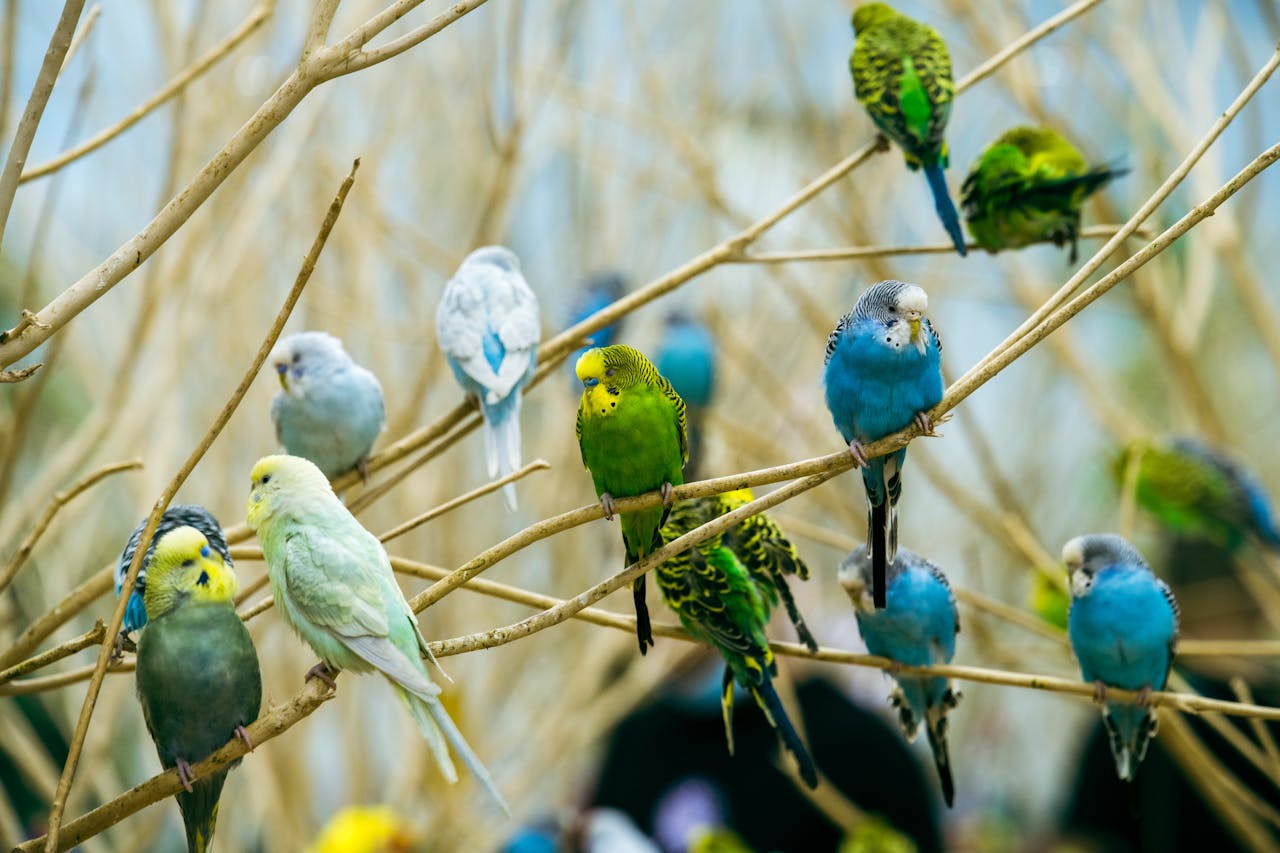
1 Comment
Pingback: African Grey Parrots: Why They Are the Smartest Pet Birds? - Pet Bonded